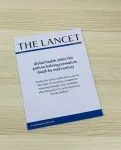(Press-News.org) In a new study published in Nature Communications Biology, wildlife rangers from the Uganda Wildlife Authority have demonstrated their ability to generate precise and reliable data on lion populations in Uganda’s Nile Delta, a critical stronghold for African lions.
The study reveals that wildlife rangers, a critical component of global conservation efforts but often underutilised in scientific research, can play a pivotal role in the conservation science surrounding the world’s most beloved big cat.
Rangers are effective at monitoring lions and are an underutilised resource
The study showed rangers trained in search-encounter surveys (the scientific gold standard for lion monitoring) provided robust and cost-effective data on lion populations.
With 102 detections over 76 days, the lion density in the Murchison Falls Nile Delta was estimated at 13.91 lions per 100 km², highlighting this area as a significant stronghold for lion conservation.
While rangers were often on the front lines of wildlife protection, they were rarely included in scientific research efforts.
This study is one of the first to demonstrate that rangers could effectively lead and contribute to data collection and population monitoring of threatened wildlife.
Their intimate knowledge of the landscapes and behaviour of target species make them invaluable champions for conservation.
Cost-effectiveness of rangers
One of the most striking results of the study was the cost efficiency of ranger-led surveys.
The cost of the ranger effort was 50% lower than using remote infrared camera traps, another popular method used for surveying big cats, showing that ranger-led initiatives could be a more sustainable and cost-effective method for monitoring lions in Africa.
Despite deploying 64 infrared camera traps, the cameras yielded only two usable detections for individual identification, suggesting that camera traps, in their current form, were not yet suitable for lion population monitoring.
Murchison's Nile Delta a critical lion stronghold
The study identified the Nile Delta within Murchison Falls National Park (Uganda’s largest protected area) as a vital area for lion conservation.
The region supported high lion densities, despite significant pressures from poaching and oil exploration, making it a critical priority conservation area in the country.
Incorporate rangers’ skills in future studies
By empowering rangers and focusing on protecting critical habitats such as the Nile Delta, we could ensure a future for Uganda’s lions.
This study offered a useful case study for scaling up lion monitoring efforts across Africa, using the invaluable skills of rangers to safeguard these iconic predators.
The authors advocated for a broader adoption of incorporating the field skills of wildlife rangers to survey lions across Africa to ensure more consistent and reliable wildlife data, which was critical for adaptive conservation management.
Dr Alex Braczkowski, lead author: “Rangers are the unsung heroes of wildlife conservation, our co-authors, Lilian Namukose and Silva Musobozi, have worked for the Uganda Wildlife Authority for over a decade and their deeply intimate knowledge for where lions were in the Murchison landscape allowed us to get a good idea of the status of lions in this critical area. Our study shows bringing rangers into wildlife monitoring and census efforts could be immensely powerful for lions across Africa.”
Mrs Lilian Namukose, Uganda Wildlife Authority ranger and co-author on the study: “This was the first scientific study of wildlife where I directly participated and my first entry point into science. Through rigorous training in three workshops across three national parks, we quickly learnt to incorporate lion data collection alongside our daily field duties. We are grateful to the Uganda Wildlife Authority for the opportunity to be involved in this work.”
Mr Silva Musobozi, Uganda Wildlife Authority ranger and co-author on the study: “Rangers are arguably the closest group to wildlife on the ground and have good knowledge of animal behaviour. Through capacity building and training, rangers can be better incorporated into the scientific and management process.”
Mr Orin Cornille, field coordinator of the Volcanoes Safaris Partnership Trust and co-author on the study: “Incorporating Uganda Wildlife Authority Rangers allowed our broader research team to focus on other parts of this very large national park. Their field knowledge of lion behaviour meant a high sample size of great data.”
Professor Duan Biggs, Associate Professor at Northern Arizona University and co-author on the study: “Our paper shows that by partnering with in-country conservation agencies and enabling local rangers – we can obtain a precise estimate of lion numbers at a fraction of the cost of other techniques."
The findings ‘Rangers on the frontline of wildlife monitoring: a case study on African lions in Uganda’s Nile Delta’ have been published in Nature Communications Biology.
END
Rangers lead ground-breaking effort to monitor Uganda's lion population in critical stronghold
2024-10-15
ELSE PRESS RELEASES FROM THIS DATE:
Modern mass extinction in an Ecuadorean cloud forest found to be a mirage
2024-10-15
One of the most notorious mass extinction events in modern times occurred on a hilltop in coastal Ecuador in the 1980s. Ninety species of plants known from nowhere else on Earth—many of them new to science and not yet given a name—went extinct when the last cloud forests of the Centinela range were cleared for agriculture. The cautionary tale of Centinela has long been a driving force in the fight to save the world’s rainforests. But did it really happen?
In a new study published in Nature Plants, an international team of botanists reveals that, indeed, it did not happen. The researchers – who spent years of scouring natural history museums, biodiversity databases, ...
HLA-DRB1*01:03 and severe ulcerative colitis
2024-10-15
About The Study: Among individuals with ulcerative colitis, the allele HLA-DRB1*01:03 was associated with severe ulcerative colitis requiring major operation, hospitalization, and systemic corticosteroid use compared with less severe disease. HLA-DRB1*01:03 has previously been linked to ulcerative colitis incidence. This study supports earlier, targeted genetic studies comparing patients with healthy controls reporting an association with total disease and severe disease requiring colectomy.
Corresponding Author: To contact the corresponding author, Marie Vibeke Vestergaard, MSc, email marievv@dcm.aau.dk.
To access the embargoed study: Visit our ...
Quantum leap in suicide prevention: Professor Philippe Courtet's visionary approach unveiled in Genomic Press Interview
2024-10-15
Montpellier, France – 15 October 2024. In a captivating Genomic Press Interview published on October 15, 2024, in the peer-reviewed journal Genomic Psychiatry (Genomic Press), Professor Philippe Courtet shares groundbreaking perspectives on suicide prevention and mental health care. As an influential PU-PH (Professeur des Universités-Praticien Hospitalier), he is a Professor of Psychiatry at the University of Montpellier, France, and head of emergency psychiatry at the University Hospital of, Professor Courtet stands at the forefront of ...
Need for streamlined miscarriage care in Canada
2024-10-15
Miscarriage, or early pregnancy loss, can have devastating emotional effects, but it is poorly managed in Canada. A review published in CMAJ (Canadian Medical Association Journal) https://www.cmaj.ca/lookup/doi/10.1503/cmaj.231489 provides guidance to physicians on how to diagnose and manage this condition and calls for referral to outpatient early pregnancy assessment clinics (EPACs) as well as a compassionate approach.
October 15 is Pregnancy and Infant Loss Remembrance Day.
Data suggest that 15%–20% of all confirmed pregnancies result in miscarriage, with ...
Traces of ancient immigration patterns to Japan found in 2000-year-old genome
2024-10-15
A joint research group led by Jonghyun Kim and Jun Ohashi of the University of Tokyo has demonstrated that the majority of immigration to the Japanese Archipelago in the Yayoi and Kofun periods (between 3000 BCE and 538 CE) came from the Korean Peninsula. The researchers analyzed the complete genome of a “Yayoi” individual and found that, among the non-Japanese populations, the results bore the most similarity to Korean populations. Although it is widely accepted that modern Japanese populations have a dual ancestry, the discovery provides insight into the details of immigration patterns to the ...
Countries that choose to do so can reduce premature death by half, researchers say
2024-10-14
DURHAM, N.C. -- Since 1970, 37 countries have cut the probability of their citizens dying before they reach age 70 in half, a milestone that signals the remarkable progress many countries have made in preventing and treating disease. But a new report argues that this goal isn’t out of reach for any country that chooses to cut its premature mortality, even those afflicted by war or poverty.
The report, published Oct. 14 by The Lancet Commission on Investing in Health, lays out a roadmap for every nation that chooses to do so to cut ...
50 by 50—How can we reduce the probability of dying before age 70 by 50% globally by 2050?
2024-10-14
A team of 50 leading international experts, the Lancet Commission on Investing in Health (CIH), explored this question, resulting in clear, actionable, and achievable measures for achieving this ambitious goal worldwide. Six of the 50 commission members are affiliated with the Bergen Centre for Ethics and Priority Setting in Health (BCEPS), a Norwegian Centre of Excellence based at the University of Bergen, Norway, including BCEPS Director and Professor Ole Frithjof Norheim, BCEPS PhD Research Fellow Sarah Bolongaita, and BCEPS-affiliated researchers Angela Chang (University ...
Research explains why some cyclists don’t wear helmets and what might convince them to wear one
2024-10-14
Copenhagen, Denmark: Wearing a helmet can prevent brain injury and deaths in cyclists, yet many do not wear a helmet. New research presented at the European Emergency Medicine Congress today (Tuesday) suggests that this is largely due to issues of convenience and comfort. [1]
The study also suggests that more adult cyclists would wear helmets if they were encouraged and incentivised to do so, for example if they were provided with a free helmet, education, and periodic reminders.
The research was presented by Dr Steven Friedman, an emergency doctor at Toronto General Hospital and associate professor at the University ...
Half of all patients with sepsis die within two years
2024-10-14
Copenhagen, Denmark: Half of all patients with sepsis admitted to an emergency medical department died within two years, according to Danish researchers investigating factors that could predict outcomes for these patients.
Dr Finn E. Nielsen, a senior scientist in the Department of Clinical Epidemiology at Aarhus University Hospital, Denmark, told the European Emergency Medicine Congress today (Tuesday) [1] that he and his colleagues examined deaths over a long follow-up period in a prospective study of 714 adult patients admitted to the emergency department with sepsis. Their findings ...
Native Hawaiian and Pacific Islander adults have third highest cardiovascular death rate in the U.S.
2024-10-14
Embargoed for release until 5:00 p.m. ET on Monday 14 October 2024
@Annalsofim
Below please find summaries of new articles that will be published in the next issue of Annals of Internal Medicine. The summaries are not intended to substitute for the full articles as a source of information. This information is under strict embargo and by taking it into possession, media representatives are committing to the terms of the embargo not only on their own behalf, but also on behalf of the organization they represent. ...







